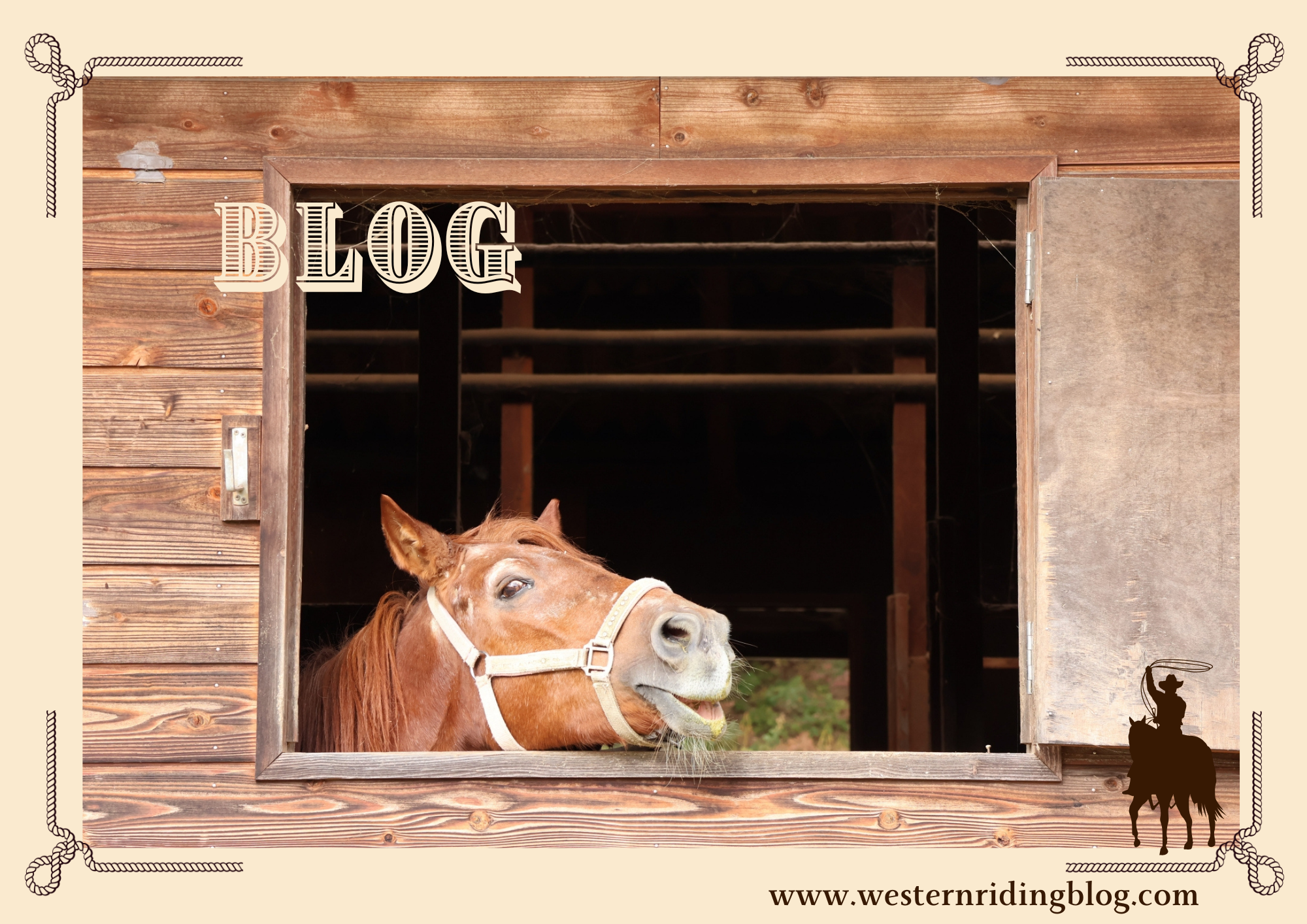はじめに〜馬と「信頼関係」って、どういうこと?
「信頼関係を築くことが大事」とよく言われますが、それは人と人の間だけでなく、馬との関係にも深く当てはまる言葉です。
でも、そもそも馬と信頼関係ってどう築いていけばいいのでしょうか?
言葉が通じない馬と、私たち人間が心を通わせるなんて、最初はとても難しく感じられるかもしれません。
でも、馬のしぐさや表情、そして私たち人間の態度や心の在り方を丁寧に見つめていくことで、少しずつその「信頼」の種が芽を出していくんです。
今日はそんな馬との信頼関係の築き方について、私の経験も交えながらお話ししていきたいと思います。
馬のしぐさから読み解く心の声
馬はとても繊細な生き物です。そのしぐさひとつひとつに、心の動きがあらわれています。たとえば、耳の向き。
両耳が前を向いているときは興味津々、片方の耳が後ろに向いていたら注意を払っている証拠。
そして、両耳が後ろを向いていたら、不機嫌だったり、緊張しているかもしれません。
また、尾をゆらゆら振るのはリラックスのサインかもしれませんし、逆にピシッと力強く振るなら苛立っている可能性もあります。
目の周りの筋肉がゆるんでいて、ゆっくりまばたきしている馬は、安心している状態。
そんな風に、馬の「非言語のメッセージ」を読み取ろうと意識することで、少しずつ馬の気持ちがわかってくるようになります。
それは、まるで言葉のない手紙を読み解いていくような、心の通訳作業なのです。
人間のしぐさが馬に与える影響
馬は人間のしぐさにもとても敏感です。
たとえば、急に大きな動きをしたり、強い声を出したりすると、それだけで「危険な存在」と受け取られてしまいます。
私も初めて馬に触れた頃は、緊張して手の動きがぎこちなくなってしまい、かえって馬に警戒されてしまいました。
人間が落ち着いていること、心を安定させて馬と向き合うことが、何よりも大切なのだと、そのとき痛感しました。
馬は、こちらがリラックスしているときに一番近づいてきてくれる生き物です。
だからこそ、馬の前に立つときは、まず深呼吸。そして、静かに、優しく、穏やかな気持ちで「こんにちは」と心の中であいさつするようなつもりで接してみましょう。
習性から学ぶ〜馬は群れの中で生きる生き物
馬は本来、群れの中で生活する動物です。
その中ではリーダーや順位があり、仲間との関係性をとても大切にしています。人間との関係にも、どこかその名残があるように感じます。
たとえば、馬は「この人は安心できる存在か?」を常に観察しています。リーダーとしてふるまおうと無理に力を見せつける必要はありません。
でも、毅然とした態度や、一貫した行動をとることはとても大切です。
優しいだけでも、強引なだけでも、信頼は生まれません。
馬にとっての「信頼できる人」は、「一緒にいて安心できる存在」。それはつまり、感情の起伏が激しくない、馬のことをちゃんと見てくれる、そんな人間なのだと思います。
小さな積み重ねが、大きな信頼に
信頼関係は、ある日突然生まれるものではありません。
むしろ、毎日の小さなやり取り、馬と過ごす中での「ちょっとした思いやり」や「ささいな成功体験」の積み重ねで、少しずつ育まれていくものです。
たとえば、いつもより少し近くに来てくれた日。
手からおやつを食べてくれた日。そんな一歩一歩が、馬との絆を少しずつ強くしていきます。
私も最初は、馬がそっぽを向いたり、逃げたりすることに落ち込んだことが何度もありました。
でも、それを「嫌われた」と受け取るのではなく、「今はまだ警戒しているだけ」と考えて、また次に向けて小さな一歩を積み重ねていきました。
馬の信頼を得るために、私たちにできること
では、具体的にどんなことを心がければ、馬との信頼関係を築けるのでしょうか? 私の経験から、いくつかご紹介します。
- 一貫性のあるふるまいを心がける
言うこと、やることが毎回違っていては、馬も混乱してしまいます。「こうしてくれると安心だな」と馬が思えるような、一定のリズムや態度を大切にしましょう。 - まず自分が心を開く
馬に心を開いてほしいなら、まずは自分が心を開くこと。怖がらないで、でも無理もしないで、正直な気持ちで向き合いましょう。 - 褒めるタイミングを逃さない
少しでも「いいな」と思った行動はすぐに褒めてあげる。タイミングが命です。馬はその瞬間をしっかり覚えています。 - 感情のコントロールを大切に
イライラしているときは、馬にも伝わります。自分の感情を整えてから馬に向き合う、それだけで関係が変わってきます。 - 馬の個性を尊重する
馬にもそれぞれ個性があります。元気な子、おとなしい子、人見知りの子……その子に合った接し方を見つけていくことが大切です。
おわりに〜週末は、馬に会いに行こう
馬と信頼関係を結ぶのは、すぐにできることではありません。
でも、その分だけ深くてあたたかい関係を築けたときの喜びは、何にも代えがたいものです。
馬の目を見つめたとき、その奥にあるやさしさや誠実さを感じられた瞬間。
馬がそっとこちらに鼻を近づけてくれたときの、なんとも言えないぬくもり。それらは、日々の小さな積み重ねがあったからこそ得られる宝物です。
もし今週末、少し時間があるなら、ぜひ馬に会いに行ってみてください。
ただ眺めるだけでも、何かが伝わってくるはずです。馬と過ごす時間は、きっとあなたの心にも優しい風を吹かせてくれるはずです。
馬との関係は、まさに「信頼」という名の橋を一緒に架けていく旅。
ゆっくりでも、一歩ずつ。その旅路を、楽しんでいきましょう。
How to Build Trust with Horses
Introduction – What Does “Building Trust” with a Horse Really Mean?
We often hear that “building trust is important,” and that doesn’t just apply to relationships between people—it’s equally true when it comes to our relationships with horses. But how do we actually build trust with a horse? Communicating heart-to-heart with an animal that doesn’t speak our language might seem incredibly difficult at first.
However, by paying close attention to a horse’s gestures, facial expressions, and by becoming more mindful of our own attitude and inner state, the seeds of trust begin to grow. Today, I’d like to share how to build that trust with horses, drawing from my own experiences.
Understanding a Horse’s Body Language
Horses are incredibly sensitive creatures. Every movement they make reveals something about their inner state. For example, their ears: if both ears are pointed forward, they’re curious or interested. If one ear is turned back, they’re paying attention to something behind them. If both ears are pinned back, they might be upset or tense.
A gently swaying tail might signal relaxation, whereas a firm, quick swish could mean irritation. If the muscles around their eyes are soft and they blink slowly, that’s a sign of feeling safe and at ease.
By learning to read these “non-verbal messages,” you’ll start to understand your horse’s feelings more clearly. It’s like becoming a translator of silent letters from their heart.
How Our Movements Affect Horses
Horses are also very sensitive to human behavior. Sudden big movements or loud voices can make us seem like a threat.
I remember when I first interacted with horses—I was nervous, and my hands moved awkwardly. This only made the horse wary of me. That experience taught me the importance of staying calm and grounded when facing a horse.
Horses feel most comfortable when we are relaxed. So before you approach a horse, take a deep breath. Greet them quietly, gently, and with a calm heart—imagine saying “hello” silently from within.
Learning from a Horse’s Nature – Herd Animals by Nature
Horses are naturally herd animals. In a herd, there’s always a leader and a social hierarchy, and relationships are key to their survival. I believe this instinct remains in their interactions with humans.
A horse is always observing—“Is this person safe?” You don’t need to force yourself to act dominant or show power. What’s important is to remain steady and consistent in your actions.
Neither being overly kind nor overly forceful builds trust. For a horse, a “trustworthy person” is someone they feel safe with—someone who stays emotionally stable and pays close attention to their feelings.
Small Steps Lead to Deep Trust
Trust doesn’t happen overnight. It grows through small, everyday interactions—the little acts of kindness, the tiny victories shared with your horse.
Like the day your horse comes just a little closer than usual. Or the first time they accept a treat from your hand. Each step, however small, deepens the bond between you.
There were many times I felt discouraged when a horse turned away or walked off. But I learned not to see it as rejection, but as a sign of ongoing caution. And I kept taking small steps forward.
What We Can Do to Build Trust with Horses
So, what can we do to build trust with a horse? Based on my experience, here are some key points:
- Be consistent in your actions: If your behavior or words change all the time, it confuses the horse. Try to create a steady rhythm and presence that the horse can rely on.
- Open your own heart first: If you want a horse to open up, you need to do the same. Be honest with your feelings—don’t push yourself, but don’t be afraid either.
- Praise at the right moment: If your horse does something good, praise them immediately. Timing is everything. Horses remember those moments clearly.
- Manage your emotions: If you’re frustrated, the horse will feel it. Calm yourself before interacting, and you’ll see a difference.
- Respect each horse’s individuality: Every horse is different—some are energetic, some are shy. Find the approach that suits their unique personality.
Conclusion – Why Not Visit a Horse This Weekend?
Building trust with a horse takes time—but the bond you create is deeply meaningful and irreplaceable.
When you look into a horse’s eyes and sense the kindness and sincerity behind them, when they gently nuzzle their nose toward you—that warmth is a gift born from countless small steps.
If you have some free time this weekend, why not go meet a horse? Even just observing them might stir something in your heart. Spending time with horses often brings a peaceful breeze to the soul.
Our journey with horses is like building a bridge called “trust”—step by step, at your own pace. Enjoy each moment of that journey.



コメント